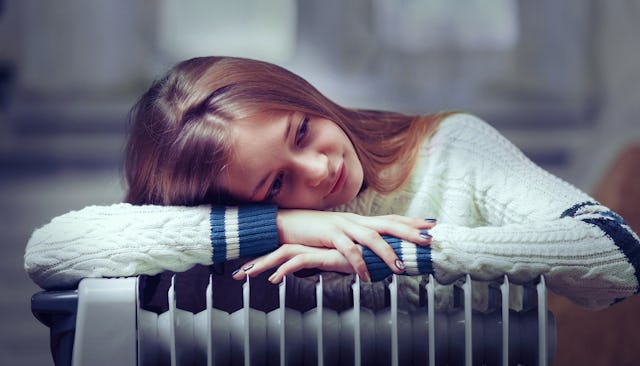You're Not Crazy: Seasonal Affective Disorder Is Real

While there’s lots to love about the winter season — snow days, the holiday season, a quickly approaching new year for a clean slate — a number of us experience some sort of depression. Whether you refer to it as winter blues, seasonal depression, or seasonal affective disorder (SAD), the fact is that it’s real and you’re not alone if you’re living with it.
According to WebMD, the exact cause and conditions for SAD are “still a mystery to scientists,” but it’s generally agreed upon that those struggling with it are sensitive to light and are in need of it more than others. So when we “fall back” and lose daylight hours — especially those hours in the morning — many of us aren’t getting enough of that sunlight to keep us in tip-top mental health. Or, if we are getting enough light, it may not be at the right time of the day like in the mornings when it tends to be darker. Yep, the explanations are still a bit confusing and convoluted. Like I said, no one has all the answers for SAD, but there are some common symptoms to check if you feel you’re living with it.
The Mayo Clinic cites some SAD symptoms as irritability, depression, low energy, oversleeping, changes in appetite, or anxiety just to name a few. Sounds like a hoot, right? For many of us, it’s more than just wanting to hit snooze for an extra few minutes of sleep in the morning. Rather it’s like our arms and legs are full of lead, making it super difficult to drag ourselves out of bed to get our day started. It’s a chore to get our normal daily activities finished. It’s hard work to stay focused on the tasks in front of us and to stay emotionally connected to those around us.
Luckily, you don’t have to suffer alone. First of all, because this bears repeating, you are not the only one struggling with SAD. Second, you need to know that it isn’t all in your head. It’s a legit condition that can affect our daily lives. The change in weather and daylight messes with brain chemicals like serotonin and melatonin, and some of us just don’t adjust as easily to those changes. There’s nothing wrong with you. You’re not broken. Your body and brain just deal with winter a little differently.
There’s also more good news in that science has offered us a few treatments to aid us in living with SAD. Light therapy is something many physicians recommend. Open the curtains to let in more natural light. Try to get outside as much as you can in the late morning and early afternoon to soak up some rays. Or you can even purchase a light box which emits a bright artificial light that has a similar effect as the sun. And, as with a lot of conditions, make sure you’re eating nutritious foods and getting exercise when you can. (I know, I know, way easier said than done, doc.)
If the winter blues really have you feeling down in the dumps, talk to your doctor, or talk to your partner or your best friend. Just talk to someone. Depression can cause us to isolate ourselves which is the worst thing you can do when you’re walking through it. Ask for a hand, ask for help, and know that winter won’t last forever (literally and figuratively).